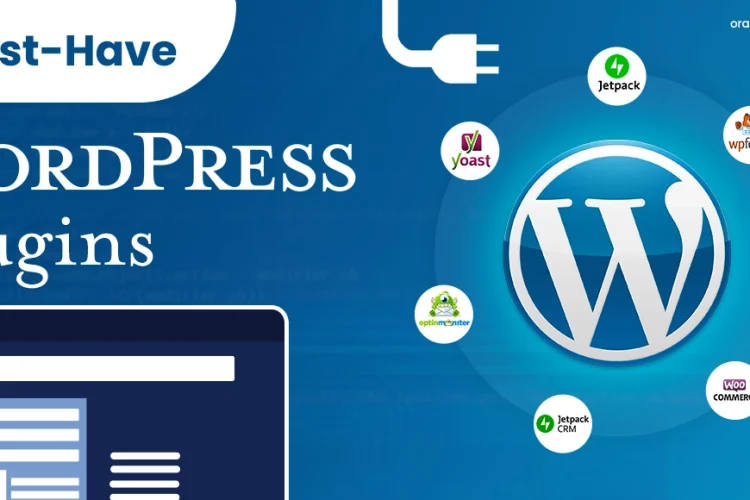Divya Stuti, with over 5 years of experience in Digital Marketing & Content Writing, has a knack for turning complex Marketing strategies, trends, and jargon...
LabVIEW is one of the key components of many of the essential devices we use every day. From the perfect packaging of snacks to lab tests, collecting electric signals from ECG machines to testing the safety of toys and cars, it is behind most of the major machines, making many things in our lives work smoothly and safely.
Laboratory Virtual Instrument Engineering Workbench has revolutionized the way engineers and scientists interact with machines and data.
What is LabVIEW?
LabVIEW is a software development environment developed by National Instruments. However, unlike traditional text-based programming languages, it offers a graphical programming environment.
In LabVIEW, Instead of writing lines of code, you need to create programs by connecting functional blocks (like icons) with wires, similar to a flowchart. This visual approach makes it intuitive for users who may not have extensive coding experience.
Most people often consider it a programming language. While it is a development environment that uses the coding language called “G”.
- It has all the features as an ordinary Programming Language
- You can easily connect hardware, such as DAQ devices, etc.
- You can install and use additional modules and toolkits for specialized applications, such as Simulation and
- Control, Real-Time Systems, DAQ Systems, Vision Systems, etc.
What is LabVIEW NXG?
LabVIEW NXG (Next Generation) is the latest version of LabVIEW, introducing a modernized interface and improved development tools. It offers:
- Cloud connectivity: Seamless integration with cloud platforms for remote access and collaboration.
- Enhanced performance: Faster execution and improved memory management.
- Web integration: Easier integration of web-based functionalities into its programs.
What is the LabVIEW+ Suite?
The LabVIEW+ Suite is a package that includes this software along with additional software from NI. This collection offers specialized tools for automating measurements, analysis, and testing, all working together to save you time.
The puls suite brings together the best NI test software to optimize engineers’ workflows and save time. Each software has features designed to speed up testing:
1. LabVIEW: It stands for National Instruments LabVIEW, which is the full name of the software developed by National Instruments.This is the top-notch environment for developing automated test systems.
2. TestStand: Used globally in validation labs and on manufacturing floors to automate and sequence tests.
3. DIAdem: Saves engineers time by automating data analysis and report creation.
4. FlexLogger and InstrumentStudio: Speed up measurement and instrument configuration processes.
Benefits of LabVIEW+ Suite
The plus Suite is designed for test professionals in electronics and electromechanical testing. It offers software solutions to reduce development time, increase data usage, and prevent rework. Learn how the LabVIEW+ Suite can benefit you.
1. Create Electronic Validation Test Systems: It helps you configure, visualize, and automate measurements, analyze your data, and share reports. Increase test coverage and decrease development time.
2. Build Electronic Production Test Systems: It assists in building measurements and test steps into comprehensive test sequences. Meet challenging test coverage requirements despite tight schedules.
3. Set Up Electromechanical Validation Test Systems: It helps you set up large data logging systems with custom functionality and share the produced data, making everyone in your lab more productive.
What is LabVIEW Used For?
This software is mostly used by scientists and engineers to make the machines and systems around us work better. It helps doctors take care of us, makes sure our food is safe and tasty, and helps companies design better products. Even though we might not see it, LabVIEW is an important part of making our lives easier and safer!
It has become the de facto standard in automated testing and lab instrument measurements but with its growing popularity, it is being used in industrial monitoring and control.
LabVIEW is used for:
- Data Acquisition: Gathering data from sensors and instruments like temperature, pressure, and sound.
- Instrument Control: Sending commands and interacting with scientific equipment.
- Automation: Creating systems for automated testing, monitoring, and control in various industries.
There are 4 main purposes of this software:
- Automated Manufacturing test
- Automated Product design validation
- Control and/or monitoring of industrial equipment
- Condition monitoring of industrial equipment
From automating test benches to analyzing medical data, this software finds application in diverse fields like:
- Engineering: Design and testing of electronic circuits, robots, and control systems.
- Science: Data acquisition and analysis in laboratories, astronomy, and physics.
- Manufacturing: Automated testing and quality control in production lines.
You should use LabVIEW, if:
- You need to make fast measurements in real instruments.
- Compact integration between software and hardwares responsible for control and measurements.
- Looking for a user-friendly environment to work.
How to Use LabVIEW:
As LabVIEW is a graphically-based programming environment, it works on a simple principle of dragging various building blocks and connecting them in a data flow architecture.
Think of it as a block diagram that we use to draw during our school days. Only, in these blocks are codes that you are connecting to other codes. It is very easy in comparison to the text based languages such as C# and VHDL.
Learning this software involves understanding its unique concepts:
- Front Panel: The user interface with controls and indicators for interacting with the program.
- Block Diagram: The “code” section where you wire function blocks together.
- VIs (Virtual Instruments): Reusable modules of code that encapsulate functionality.
- Loops: Loops enables you to repeatedly execute a specific code. Various types of loops and structures are located in the structure sub palette on the Block Diagram. The two major important loops are the while loop.
- Plotting: It can plot your data. The visualization of data can be done in two ways: a waveform chart and waveform graph.
- SubVIs: SubVIs are VIs within your VI. SubVIs are the smaller component of VI that is responsible for boosting the readability and reusability. They are like the functions and methods that are used in coding languages.
- Case Structures: Case structures are the most used ones in LabVIEW, similar “If .. Else ..” that is used in text based programming languages.
This is not the end of the list. Learning LabVIEW is an endless process. However, National Instruments offers various resources, including tutorials, online courses, and a vibrant community, to help you learn this software.
How Much Does LabVIEW Cost?
LabVIEW comes in various editions with different functionalities and pricing structures. National Instruments offers trial versions for exploration, and paid options range from student licenses to professional editions catering to different needs.
Price Plans:
| Plans: | Price |
| Base: | INR 45,600.00/year |
| Full: | INR 143,700.00/year |
| Professional: | INR 239,300.00/year |
How to Install LabVIEW:
Installing LabVIEW involves downloading the software from National Instruments’ website and following the on-screen instructions. It’s recommended to check the system requirements to ensure your computer meets the minimum specifications.
1. After downloading LabVIEW, double click on the .exe file inorder to start the installation process, now select a save location for 2015LV-WinEng.exe
2. Once the LabVIEW downloader downloading has completed, click “Open”
3. Select a location to unzip the folder and then click on “Unzip”
4. After extracting the file, click OK
5. Accept the “User Account Control” and select “Next”
7. Fill in User information
8. Fill in Serial numbers
- For Students: license key is stated on swdb
- For Staff: contact ISD IT Purchasing to receive key
9. Select the primary installation directory
10. Select the features to install
11. Accept all software license agreements to proceed and Click on “Next”
13. LabVIEW installation is complete
How to Completely Uninstall LabVIEW:
The uninstallation process varies depending on your operating system. You can typically find LabVIEW in the “Add or Remove Programs” section (Windows) or “Applications” section (Mac) and follow the uninstallation wizard. Additionally, National Instruments provides specific instructions on their website.
LabVIEW Advantages and Disadvantages:
Advantages:
- Intuitive visual programming: Easier to learn for beginners compared to text-based languages.
- Fast development: Simplifies building complex applications with pre-built functions and modules.
- Seamless hardware integration: Works directly with a wide range of instruments and devices.
- Large user community: Extensive online resources and support available.
- Ease of Use: Graphical programming makes it intuitive for people without extensive coding backgrounds.
- Built-in Analysis Tools: This software offers extensive libraries for signal processing, data analysis, and visualization.
Disadvantages:
- Cost: Paid software with various licensing options.
- Limited flexibility: Less customization compared to some text-based languages.
- Potential performance limitations: May not be ideal for highly complex or resource-intensive applications.
Examples of LabVIEW Applications
Automated Test System:
- A LabVIEW program can control a variety of instruments (signal generators, power supplies, oscilloscopes) to test the performance of an electronic circuit board.
- It acquires data, performs calculations, and generates detailed test reports.
Temperature Monitoring and Control:
- It can read data from multiple temperature sensors throughout a building.
- Based on sensor readings, it can control heating/cooling elements to maintain a set temperature.
- The user interface displays real-time temperature data and allows adjustments.
Machine Vibration Analysis
- This software can acquire vibration data from an accelerometer attached to a piece of industrial machinery.
- It can employ signal processing techniques (like FFT) to analyze frequency patterns and detect potential faults early on.
Robotics Control:
- This software can control motors and actuators in a robotic system.
- Acquire sensor feedback (from cameras, proximity sensors, etc.) for real-time navigation and decision-making.
LabVEIW Review:
Having spent years using LabVIEW for conducting laboratory experiments, I can confidently say that it has impressive capabilities and versatility. LabVIEW has consistently proven itself as my preferred software for data collection, offering a seamless experience with a user-friendly interface.
One of the standout features of LabVIEW is its adaptability, allowing users to create customized solutions for a wide array of applications. The programming aspect is exceptionally clean, and the software offers a beautiful UI that simplifies the process of creating complicated programs. It has become my universal solution for diverse experimental setups, provided that users are adequately trained to harness its full potential.
Things that I appreciate about it is user-friendliness. Beginners can also use the software effectively without extensive programming backgrounds
However, like any tool, LabVIEW is not without its drawbacks. One notable issue is the software’s sensitivity to time reference accuracy. If not set precisely, it may experience lag and miss crucial data points, which can be frustrating, especially in time-sensitive experiments.
Another drawback lies in the installation and uninstallation process. Downloading the wrong version can lead to a difficult uninstallation process, causing unnecessary hassles for users.
Moreover, debugging within internal blocks poses a challenge. Some blocks function as black boxes, making tinkering with them a difficult task. This complexity can hinder the troubleshooting process, making it harder to identify and rectify issues within the system.
Verdict:
LabVIEW remains a great tool for my laboratory work, offering unparalleled customization and user-friendly programming. While it excels in many aspects, addressing issues related to time accuracy, installation/uninstallation processes, and internal block debugging could further enhance the overall user experience.

Divya Stuti, with over 5 years of experience in Digital Marketing & Content Writing, has a knack for turning complex Marketing strategies, trends, and jargon into interesting and easy to digest blog posts. Whether she’s breaking down the SEO, Social Media or decoding campaigns, Divya knows how to make marketing feel exciting and easy to understand. Armed with a sharp eye for strategy and a storyteller’s instinct, she writes with clarity, creativity, and just the right dose of wit.
More Posts

